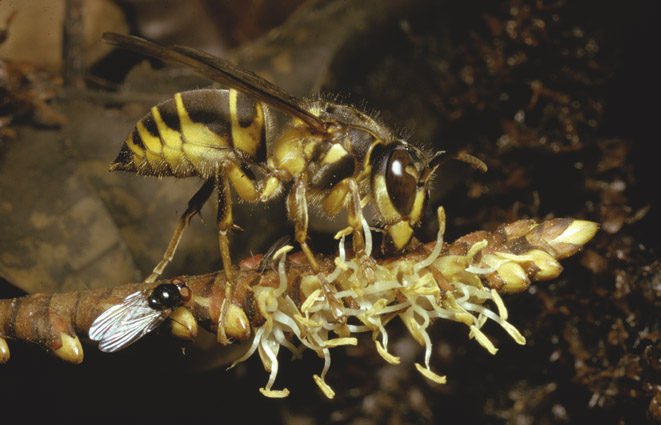- Acanthophoenix
- Acrocomia
- Actinokentia
- Actinorhytis
- Adonidia
- Aiphanes
- Allagoptera
- Ammandra
- Aphandra
- Archontophoenix
- Areca
- Arenga
- Asterogyne
- Astrocaryum
- Attalea
- Bactris
- Balaka
- Barcella
- Basselinia
- Beccariophoenix
- Bismarckia
- Borassodendron
- Borassus
- Brassiophoenix
- Burretiokentia
- Butia
- Calyptrocalyx
- Calyptrogyne
- Calyptronoma
- Carpentaria
- Carpoxylon
- Caryota
- Ceratolobus
- Ceroxylon
- Chamaedorea
- Chamaerops
- Chambeyronia
- Chelyocarpus
- Chuniophoenix
- Clinosperma
- Coccothrinax
- Cocos
- Corypha
- Cryosophila
- Cyphokentia
- Cyphophoenix
- Cyphosperma
- Daemonorops
- Deckenia
- Desmoncus
- Dictyocaryum
- Drymophloeus
- Dypsis
- Elaeis
- Eleiodoxa
- Eremospatha
- Eugeissona
- Euterpe
- Gaussia
- Geonoma
- Guihaia
- Hedyscepe
- Hemithrinax
- Howea
- Hyophorbe
- Hyospathe
- Hyphaene
- Iriartea
- Iriartella
- Itaya
- Jailoloa
- Johannesteijsmannia
- Juania
- Jubaea
- Jubaeopsis
- Kentiopsis
- Kerriodoxa
- Korthalsia
- Laccospadix
- Laccosperma
- Lanonia
- Latania
- Lemurophoenix
- Leopoldinia
- Lepidocaryum
- Lepidorrhachis
- Leucothrinax
- Licuala
- Linospadix
- Livistona
- Lodoicea
- Lytocaryum
- Manicaria
- Manjekia
- Marojejya
- Masoala
- Mauritia
- Mauritiella
- Maxburretia
- Medemia
- Metroxylon
- Myrialepis
- Nannorrhops
- Nenga
- Neonicholsonia
- Neoveitchia
- Nephrosperma
- Normanbya
- Nypa
- Oenocarpus
- Oncocalamus
- Oncosperma
- Orania
- Oraniopsis
- Parajubaea
- Pelagodoxa
- Phoenicophorium
- Phoenix
- Pholidocarpus
- Pholidostachys
- Physokentia
- Phytelephas
- Pigafetta
- Pinanga
- Plectocomia
- Plectocomiopsis
- Podococcus
- Pogonotium
- Ponapea
- Prestoea
- Pseudophoenix
- Ptychococcus
- Ptychosperma
- Raphia
- Ravenea
- Reinhardtia
- Retispatha
- Rhapidophyllum
- Rhapis
- Rhopalostylis
- Roscheria
- Roystonea
- Sabal
- Sabinaria
- Salacca
- Saribus
- Satakentia
- Satranala
- Schippia
- Sclerosperma
- Socratea
- Solfia
- Sommieria
- Syagrus
- Synechanthus
- Tahina
- Tectiphiala
- Thrinax
- Trachycarpus
- Trithrinax
- Veitchia
- Verschaffeltia
- Voanioala
- Wallaceodoxa
- Wallichia
- Welfia
- Wendlandiella
- Wettinia
- Wodyetia
- Zombia
- x Jubautia splendens
- ?? Acoelorrhaphe
- ?? Bentinckia
- ?? Brahea
- ?? Clinostigma
- ?? Colpothrinax
- ?? Copernicia
- ?? Cyrtostachys
- ?? Dictyosperma
- ?? Dransfieldia
- ?? Heterospathe
- ?? Hydriastele
- ?? Iguanura
- ?? Incertae sedis & excluded names
- ?? Loxococcus
- ?? Micronoma
- ?? Paripon
- ?? Pritchardia
- ?? Rhopaloblaste
- ?? Serenoa
- ?? Washingtonia

Distribution
Map uses TDWG level 3 distributions (https://github.com/tdwg/wgsrpd)
Kedah, Kelantan, Penang, Perak, Trengganu, Pahang, Selangor, Negri Sembilan, Malacca, Johore. South Thailand, North Sumatra. (Dransfield, J. 1979: A Manual of the rattans of the Malay Peninsula. Malayan Forest Recirds 29.)A
Discussion
- "Cucor" is one of the commonest palms in Malaya growing throughout the Peninsula except for Perlis. It can be found from near sea-level up to about 800 m in the mountains. It is not found in peat swamp or mangrove forest, and it seems to prefer lower hillslopes and stream sides, though in many places it will grow far from running water on level ground; it does appear to avoid sharply-drained ridgetop soils. "Cucor" is very easily recognised by its non-climbing habit, by the grey spines with yellowish bases and by the leaflets dirty-grey indumentose below. It might be confused with C. lobbianus but the latter has much smaller leaves, strikingly chalky-white rather than dull grey below, and the inflorescences are quite different. I can see no satisfactory difference between var. griffithianus and var. castaneus and so have included the former in the latter. The only difference (the number of rows of scales) is unsatisfactory and the variation found in the field is without major disjunctions. (Dransfield, J. 1979: A Manual of the rattans of the Malay Peninsula. Malayan Forest Recirds 29.)A
Etymology
- Castaneus - chestnut-coloured, referring to the fruit colour cucor (Dransfield, J. 1979: A Manual of the rattans of the Malay Peninsula. Malayan Forest Recirds 29.)A
Uses
- Cane too short to be used. Leaves used for atap, immature fruit used as cough medicine by "Orang Temuan". (Dransfield, J. 1979: A Manual of the rattans of the Malay Peninsula. Malayan Forest Recirds 29.)A
Description
- Clustering undergrowth acaulescent palm showing no tendency to climb. Stem decumbent, or erect, or subterranean, rarely more than 1.5 m tall, by up to 8 cm in diameter without sheaths, with very crowded nodes. Noflagellum; no cirrus. Leaves up to about 4 m long with petiole up to 1.5 m or more. Sheath and petiole dull green armed with flattened grey, yellow-based spines, and grey-brown indumentum; spines arranged in groups, very variable in length from 2 mm to 60 mm; ligule present around leaf sheath mouth, armed with small spines. Leaflets about 30-40 on each side of the rachis, to 50 cm long by 3 cm wide, regular, rather distant dark shiny green above, dull dirty grey indumentose below, armed with scattered black bristles on lower 3 nerves, on margins and sometimes on upper surface. Inflorescences borne low on the leaf sheath the origin obscured by the leaf sheath, up to about 45 cm. Female inflorescence with up to about 15 rather stiff crowded rachillae covered with dense bracts, in fruit elongating. Flowers with pinkish to crimson bracts and petals in bud, becoming pale at flower opening. Male inflorescence more highly branched, laxer and sinuose. Ripe fruit to 25 mm long by to 18 mm wide, oblong, with pronounced beak, rich chestnut brown in colour covered in 18-27 vertical rows of scales. Endosperm homogeneous. Seedling leaf with 6 leaflets, dark green above, grey indumentose below. (Dransfield, J. 1979: A Manual of the rattans of the Malay Peninsula. Malayan Forest Recirds 29.)A
- Log in to post comments

